Mixing Slavic folklore, pagan rituals, legendary myths and contemporary issues, visual artist Anna Perach (1985, USSR) elaborates an original narrative with which she explores the ancient and complex female archetypes underlying social conventions in different communities. In Perach’s work, these «primordial images», always in constant reformulation, become tactile creatures with hybrid and polymorphous features, capable of evoking in the viewer both a sense of disquiet and familiarity. Made using the craft technique of tufting (which consists in the production of tufts of yarn on a base support) the sculptures are distinguished by their dual nature: static and dynamic. They can be either stand-alone, self-supporting objects through the use of internal wooden structures or wearable costumes as part of a performance program. Starting from the creation of masks to the elaboration of life-size figures, Perach breaks through the intangible boundaries of the collective unconscious by bringing attention to the cultural heritage and gender roles that define contemporary society.
Your art practice is based on the technique of tufting. When did you first start using this medium?
I approached tufting during my MFA at Goldsmiths University in London, and right away I felt a sense of familiarity and attraction to its texture and 3D potential. Before getting into tufting, I experimented with different materials such as fabric, ceramics and embroidery, as well as assemblage of domestic objects. Due to its use in domestic settings, tufting incorporates several characteristics that fit perfectly with many of the themes I address in my research such as identity, domesticity, cultural heritage, and gender role dynamics.
We could call your aesthetic «grotesque». What are your sources of inspiration?
Initially, I turned my attention to the analysis of Slavic mythology, in particular I was attracted, and still am, to those female characters who, during the course of history, undergo some form of transformation or whose role is distinguished by its complexity and duality. Later, I began to broaden my perspective by focusing on legends and mythologies from other communities in which the same archetypes are repeated. Through my practice, I wish to reach the primal and unprocessed elements within, my own psyche and also in that of the viewer. This intention has led me to develop an aesthetic that is attractive, brightly coloured, and familiar material, and at the same time its underlying content disturbing and uncomfortable.
Why did you become interested in analytical psychology and why only in female archetypes?
In 2007, while completing my BFA in Art, I began working in education and studying the theories regulate group dynamics while developing a strong interest in the field of psychotherapy. Naturally, these experiences in the world of therapy penetrated and influenced my work, which after all is about people and their stories. Being a woman, I easily identify with people of my gender, I feel an immediate access to their world. In other words, I feel a sense of empathy toward their stories, which I try to share through the use of archetypes.
Many of your works, in addition to being free standing objects, are wearable costumes. When did you start accompanying movement to the sculptures?
It was a natural development that followed the tufted mask. At that time, I was focused on ceremonial garments and their social function within communities. I began to imagine the domestic environment as a place of private ritual where the mask is the costume that an individual wears to suppress it. I began to wonder what happens to the person once he or she enters the costume, that is, wears the mask. And so, the first activations began. The performative element became an integral part of the work, present from the conception of the work, rather than a secondary addition to its completion. To study the movement of the sculptures and their presence within the space, I undertook a long collaboration with Luigi Ambrosio, who has a great ability to inspire vulnerability and strength in each character. When the performance concludes, the costume is placed on a custom-made wooden stand that mimics the liveliness of the piece as it is activated.
Let’s talk about Seven Wives (2020). What is the story and message of this piece?
Seven Wives is based on the tale of the bloodthirsty Bluebeard [by Charles Perrault], who killed his wives [one after another then throwing the bodies into the dungeon of his castle]. One particular illustration in the fairy tale shows the room where the remains are kept: the women’s heads have been severed from the lifeless bodies and hung from a rope. In Seven Wives I recreated the seven capitonnées heads of the wives, each referring to one of the seven Jungian archetypes of women. The heads are hung with S (hooks often used for meat) from a hemp rope. During the performance, three masks were activated, and the performers created personal rituals inspired by movements associated with hysteria. With this project, I wanted to reconnect the heads to their bodies, the rational to the experiential.
Your earliest works are masks that have since developed into life-size forms, such as Baba Yaga (2019). What prompted this evolution?
I started developing fuller pieces when I was able to make more complex and ambitious forms. Speaking in terms of content, there was a gradual shift away from the face and identity toward the body and the memories it holds. That said, I still enjoy making masks, and I think it is fertile ground.
Sometimes in your performances, some characters meet like Baba Yaga and Alkonost (2019). Where did the idea of putting these two mythological figures in dialogue come from?
In previous performances, I had experimented with staging different wearable sculptures to see how their meeting could enhance certain characteristics and aspects of their characters. With Baba Yaga and Alkonost, I wanted to bring out the relationship between mother and daughter: Baba Yaga [generally identified as a witch or enchantress who can grant fortune and at the same time perform despicable actions] is the mother with an intimidating and protective character, while Alkonost [known as the naive young woman betrayed just before her wedding] is the daughter who is searching for her own voice. While initially, during the performance, the mother plays a predominant role over the daughter, gradually her power fades until it dissolves, leaving the daughter to emerge as she becomes more self-aware and confident.
I would like to ask you about one of your latest works Spidora (2022). How did the idea for this sculpture come about?
>As an integral part of working with performers, I inquire and try to trace their experiences as they inhabit the sculptures. In particular, I am interested in the tension that is created during the performance between the dancer and the wearable piece. And it was this connection that led me to the image of Spidora [a monsteroues creature, with the head of a woman and the body of a spider, born from the optical experiments of English magician Henry Roltair]. For me, Spidora is a woman whose body has been restricted and enhanced by a wearable device, whose transformation has confined her body, thus making her a victim. Looking at this character a duality emerges between the intimidating and fearful aspect of Spidora, as an association to the fearsome black widow spider capable of devouring the male, and her vulnerable nature represented by her confinement within the wearable piece. I wanted to expand her world and give space to this complexity.
Spidora was recently exhibited in London in an installation that included two other works, Sack of Body Parts and Working Frame. How do these three sculptures connect?
The exhibition space was Spidora’s lair, where she meticulously worked on creating other body parts that were then destined to take on more complex forms, like those of Spidora herself. All of the works [that make up the installation] have the potential to become «other»: Working Frame preserves fragments of tufted patterns from which Spidora was born, while Sack of Body Parts, contains several patterns such as heads, legs, hands, stitched together into 3D shapes. These later hatched to become other Spidore. Spidora, therefore, does not have a definite, predetermined form, but is open and capable of developing additional limbs and decomposing. In addition to Spidora’s story, the exhibition reflects on my studio practice and the process of tufting, sewing and creating wearable sculptures.
The exhibition was accompanied by sound. Is sound a recurring element in your installations?
Sound is a powerful tool that can create certain environments allowing the viewer to immerse themselves in the exhibition space. It is a component present in most of my performances and solo exhibitions. I work with a sound producer, Jamie Hamilton, who helps me transform images and my thoughts into sound. We often focus on the noises and sounds that the materials in individual exhibitions can produce. For Spidora Jamie recorded me while I was working in my studio, especially when I was working on the frame with the gun, sewing and cutting. He also recorded the performer’s breathing as he rehearsed the movements. This sound-making technique allows us to create an audio idiosyncratic to the performance.
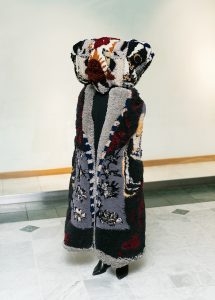 Baba Yaga, 2018, axminster yarn & artificial hai, 80 x 90 x 170 cm, Photo by Matt Ashford, Courtesy of the artist and ADA, Rome
Baba Yaga, 2018, axminster yarn & artificial hai, 80 x 90 x 170 cm, Photo by Matt Ashford, Courtesy of the artist and ADA, Rome
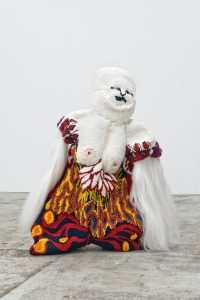 Alkonost, 2019, tufted yarn, hand embroidery, 80 x 130 x 60 cm, Photo by Matt Ashford, Courtesy of the artist and ADA, Rome
Alkonost, 2019, tufted yarn, hand embroidery, 80 x 130 x 60 cm, Photo by Matt Ashford, Courtesy of the artist and ADA, Rome
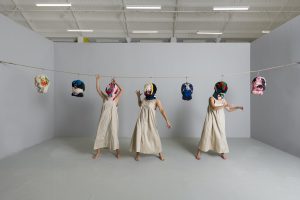 Seven Wives, 2020, tufted yarn & artificial hair, metal hooks and hemp rope, size varies, performance at Goldsmiths University, London, Photo by Matt Ashford, Courtesy of the artist and ADA, Rome
Seven Wives, 2020, tufted yarn & artificial hair, metal hooks and hemp rope, size varies, performance at Goldsmiths University, London, Photo by Matt Ashford, Courtesy of the artist and ADA, Rome
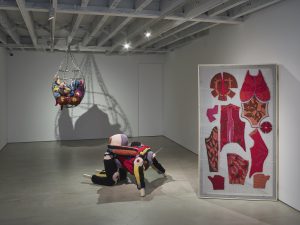 Spidora, 2022, Installation view at Edel Assanti, London, Size Varies , Photo by Andy Keate, Courtesy of the artist and Edel Assanti, London
Spidora, 2022, Installation view at Edel Assanti, London, Size Varies , Photo by Andy Keate, Courtesy of the artist and Edel Assanti, London
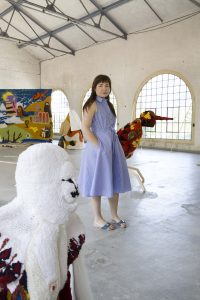 Anna Perach, Storia Notturna, 2020, Photo by Roberta Segata, Courtesy Centrale Fies1, Dro
Anna Perach, Storia Notturna, 2020, Photo by Roberta Segata, Courtesy Centrale Fies1, Dro
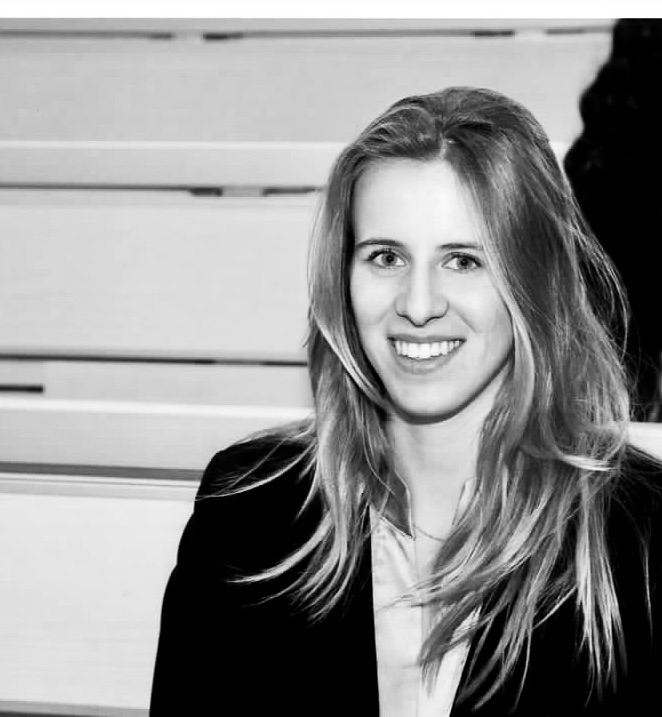
Mariavittoria Pirera, born in 1995, has a historical-artistic education obtained with a three-year degree in History of Cultural Heritage, historical-artistic profile, at Università Cattolica del Sacro Cuore, Milan, and with a master’s degree in History and Conservation of artistic heritage, contemporary art history, at Ca’ Foscari University, Venice. She lives and works in Milan.






NO COMMENT